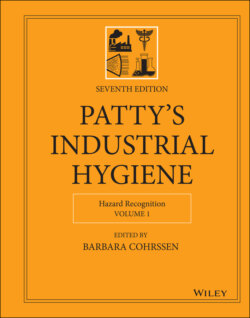Читать книгу Patty's Industrial Hygiene, Hazard Recognition - Группа авторов - Страница 39
4.8 Evolution of Occupational and Industrial Hygiene Ethics
ОглавлениеAs industrial hygiene became a distinct and recognized profession, it became evident that ethical standards would be appropriate to help to guide the practice. In 1991, the ABIH, the AIHA, the Academy of Industrial Hygiene (AIH), and the ACGIH chartered the Code of Ethics Task Force, whose charge was to (i) review and revise the industrial hygiene code of ethics and to supplement it with supporting interpretive guidelines, and (ii) recommend methods to educate members about ethical conduct and to recommend disciplinary procedures and mechanisms for enforcement. A new code was developed and addressed industrial hygienists' responsibilities to the profession, to workers, to employers and clients, and to the public and was nonenforceable (merely aspirational). In addition, this new Code of Professional Ethics for the Practice of Industrial Hygiene comprised six canons with interpretive guidelines was adopted in 1995 (https://synergist.aiha.org/201601-beyond-exposure). The canons of ethical conduct require industrial hygienists to (i) practice their profession by applying scientific principles; (ii) counsel affected parties regarding risks and protective measures; (iii) keep information obtained confidential except under special circumstances; (iv) avoid compromise of professional judgment and conflict of interest situations; (v) practice only in their areas of competence; and (vi) uphold the integrity of the profession.
Beginning in 2006, a Joint Ethics Task Force was established and consisted of representatives of the four original chartering organizations (AIHA, ACGIH, AIH, and ABIH), the Joint Industrial Hygiene Ethics Education Committee (JIHEEC), and an attorney specializing in professional codes of ethics. The primary goal of this task force was to revise and renew the current code of ethics, with a special emphasis placed upon enforcement. The need to sharpen and refine code language and wording was considered a key component of the task force's mission.
Overall, two new codes were approved and presented to the general membership at the June 2007 AIHce in Philadelphia. The membership‐based organizations (AIHA, ACGIH, and AIH) moved away from enforcement and toward education, delegating the role of enforcement to ABIH (70). The general set of guidelines adopted by AIHA, ACGIH, and AIH were intended to help all association members understand their ethical responsibilities. The primary goal of these principles was to educate members, the profession, and the public about acceptable behavior norms in harmony with ABIH requirements, rather than to create a disciplinary system.
Both the ABIH Code of Ethics and the membership‐based organizations' Ethical Principles are meant to serve as a standard for the profession – a guideline that uplifts the profession in a consistent and uniform manner. The overall expectation associated with the new codes is that priority will be given to health and safety interests related to the protection of people. Much like the Hippocratic Oath associated with the medical field, industrial hygienists should strive to “abstain from doing harm” (Primum non nocere) and to hold the people we protect in the highest regard.
Internationally, the IOHA Code of Ethics is intended to cover all occupational/industrial hygiene associations who are members of IOHA. It prescribes (i) the code of ethics for IOHA Board members, and (ii) the general principles expected in the code of ethics of those associations who comprise the members of IOHA (www.ioha.net).
